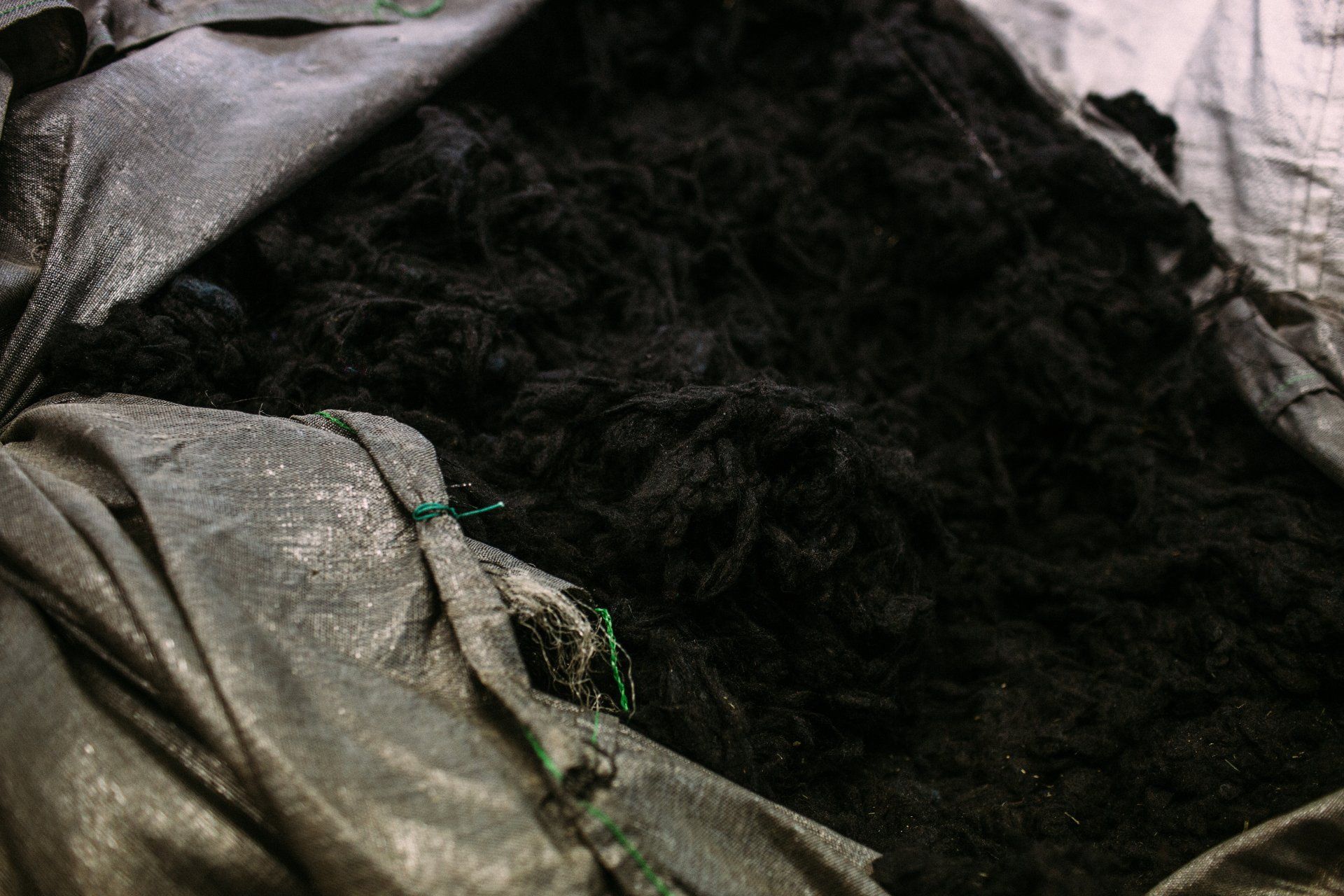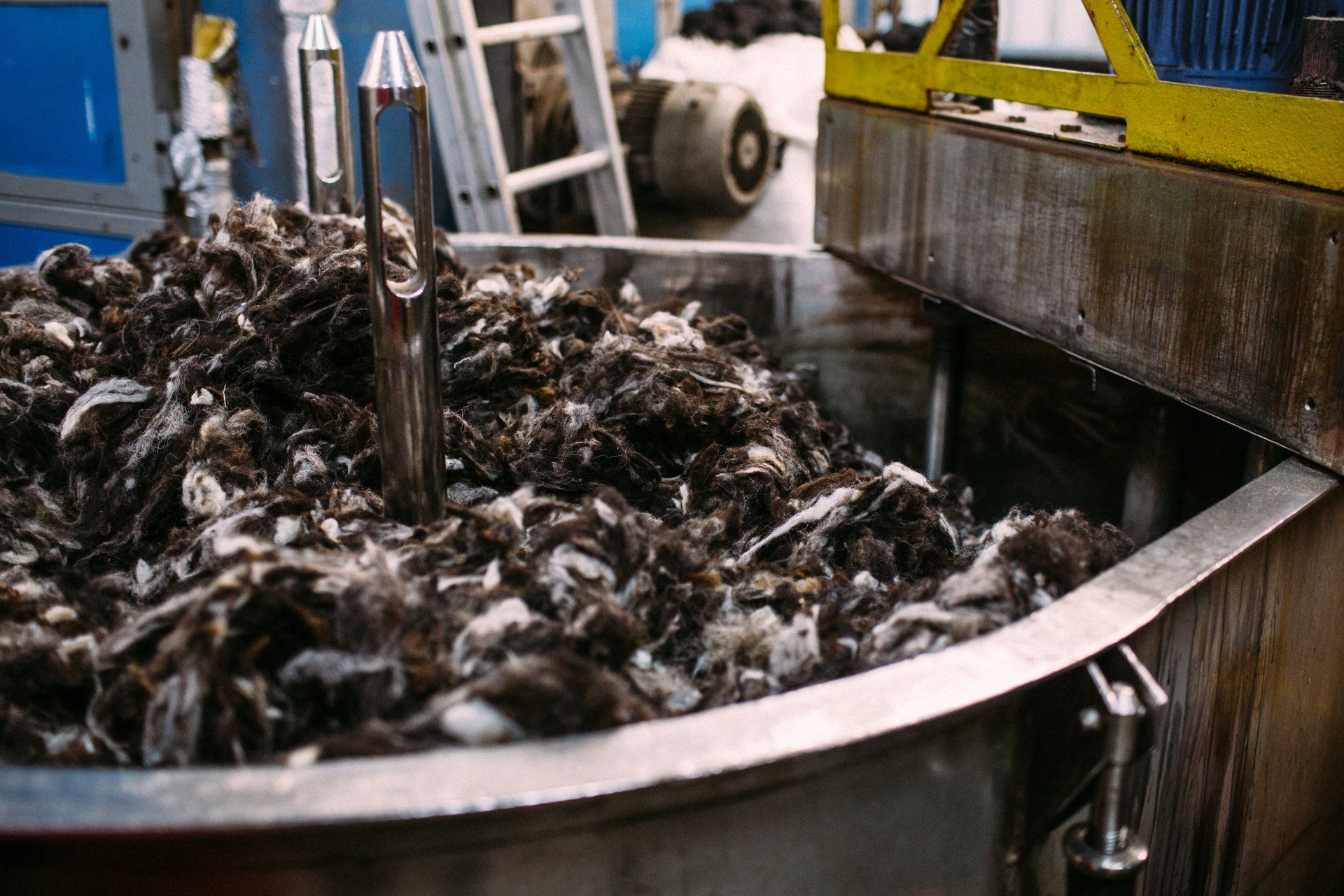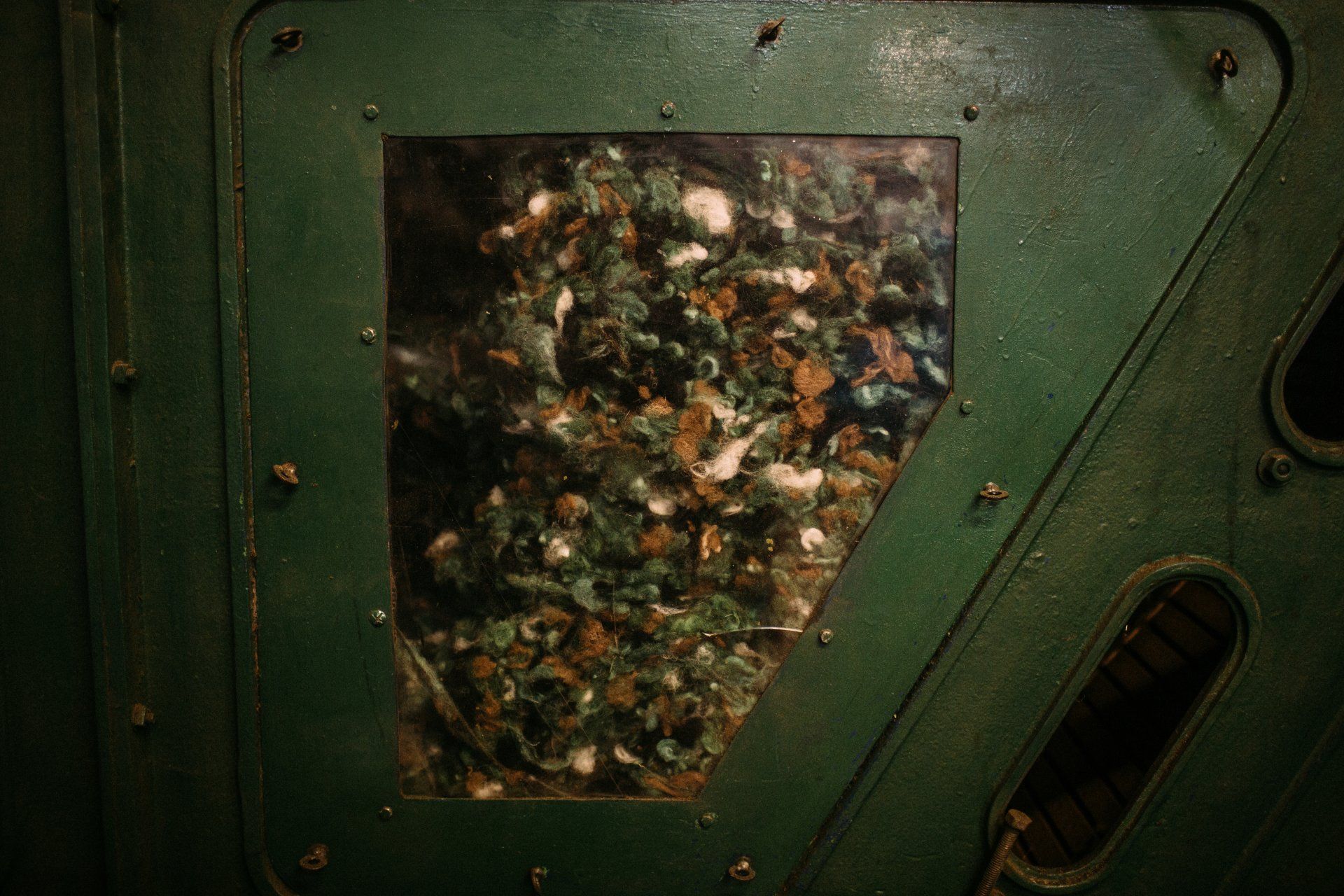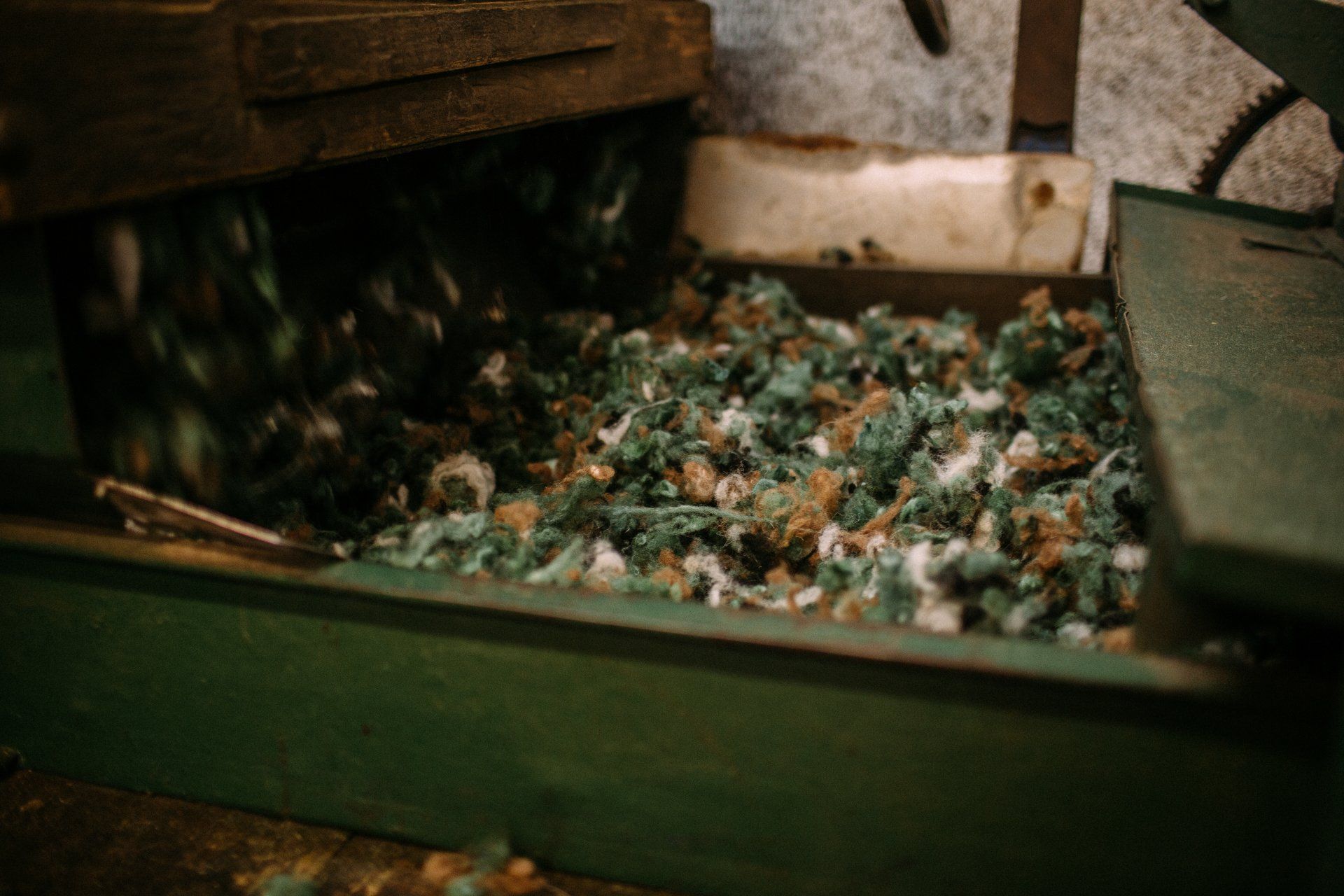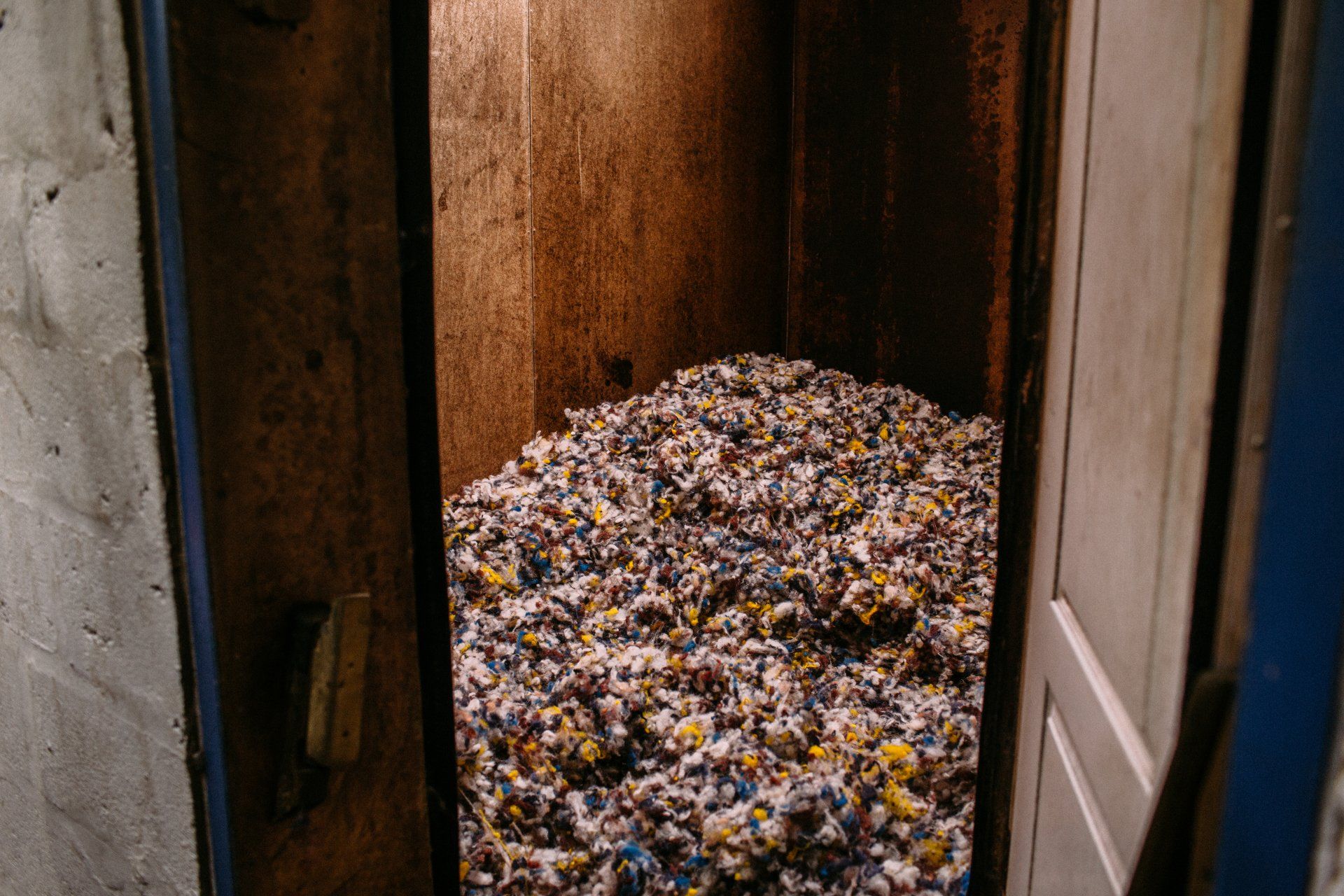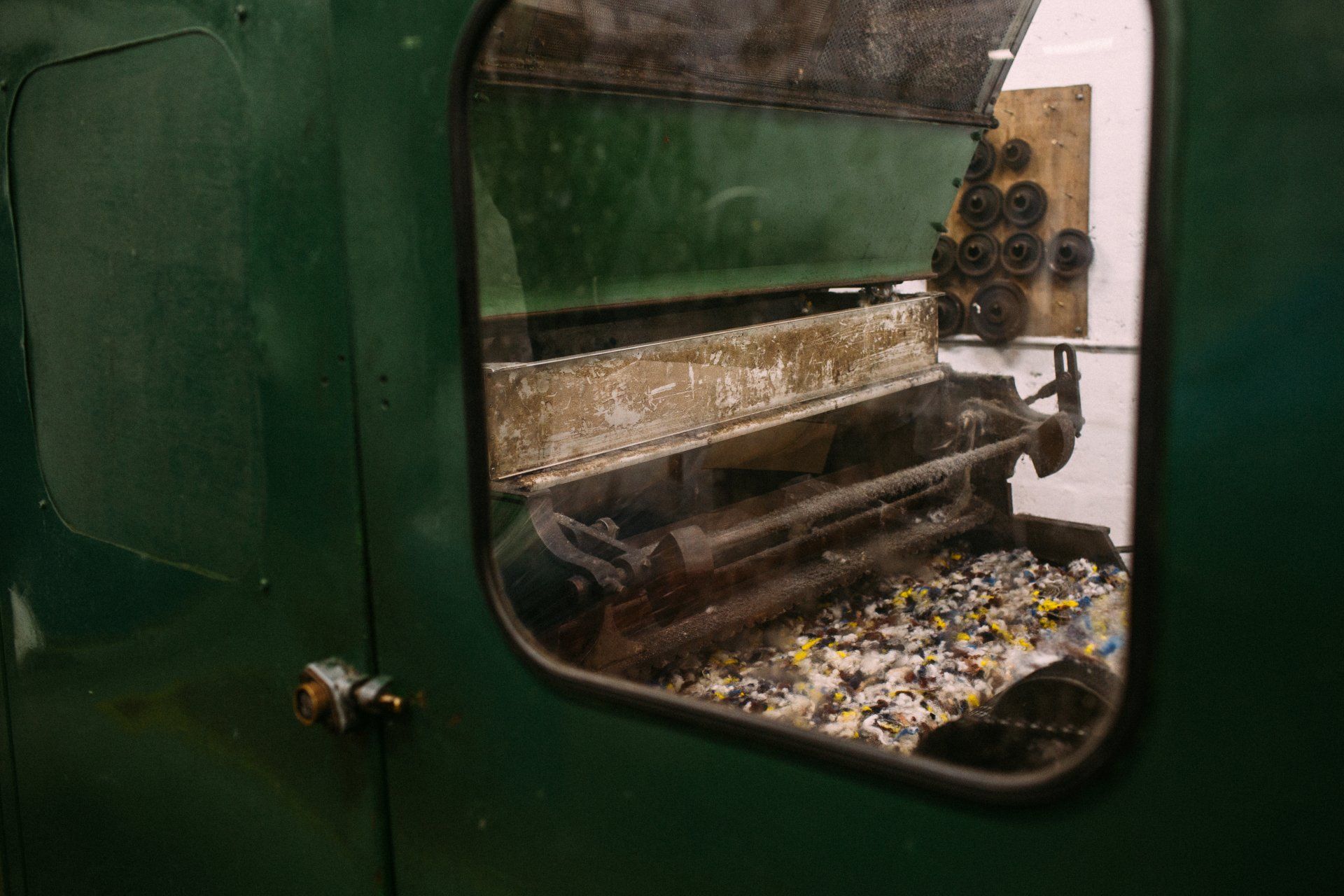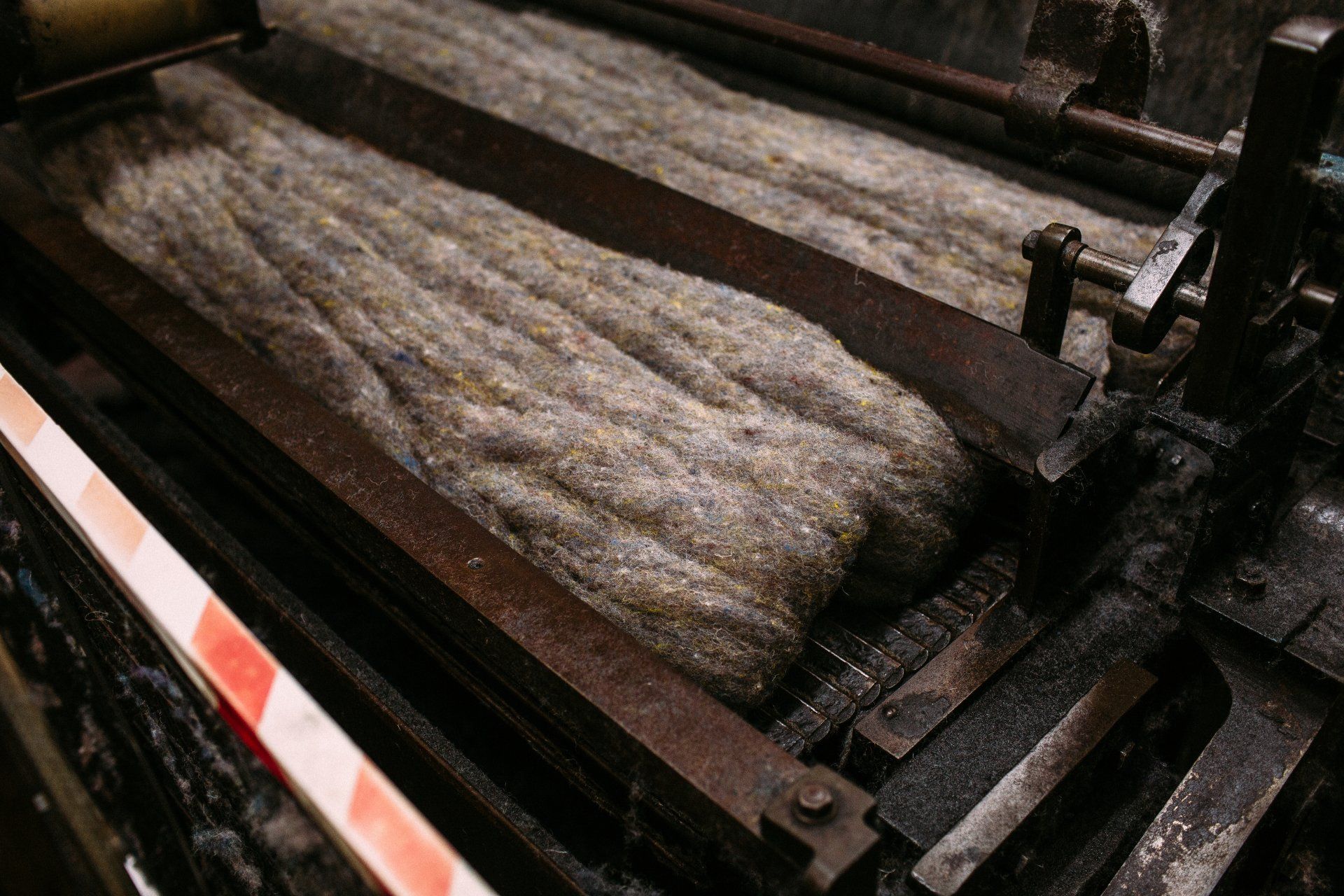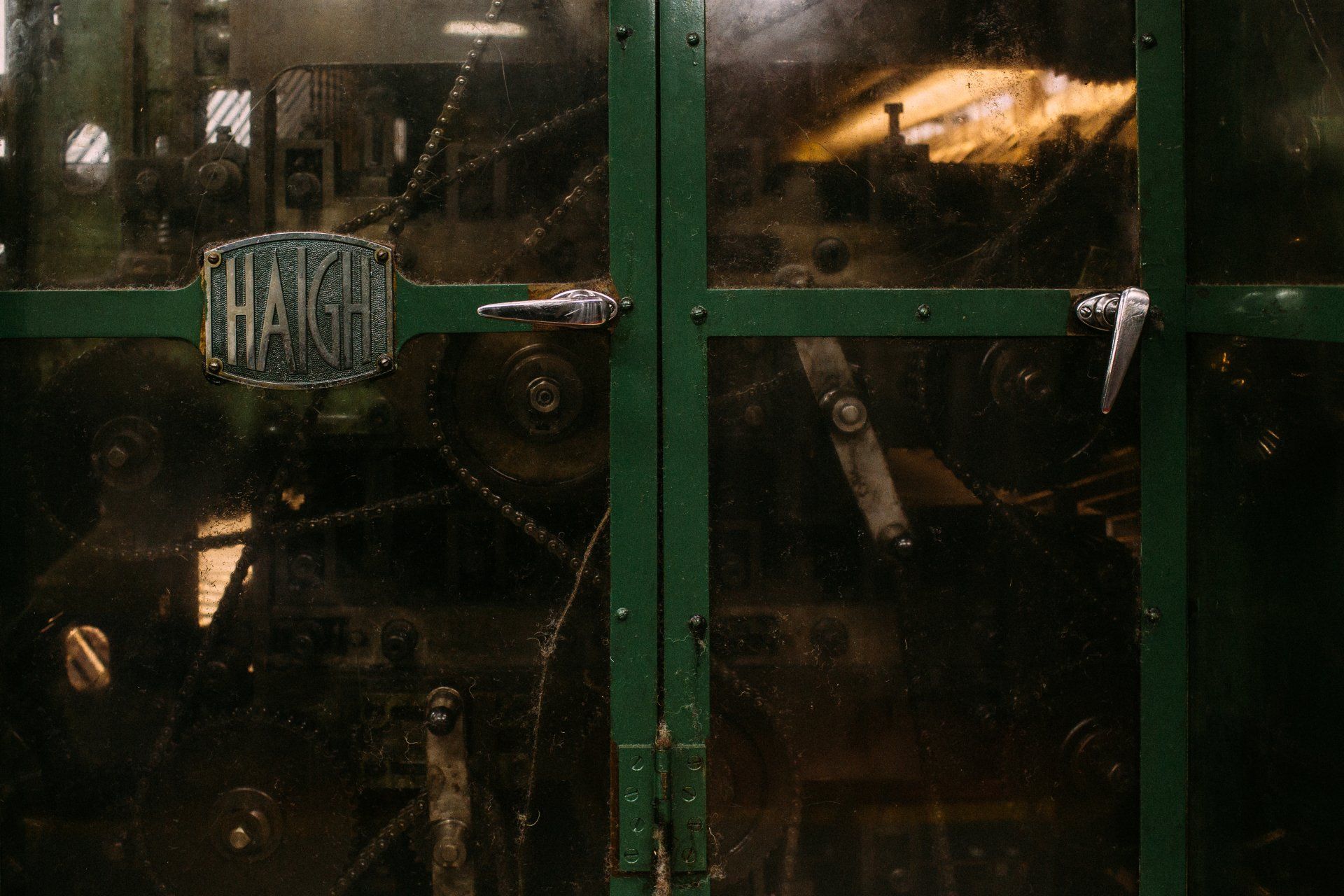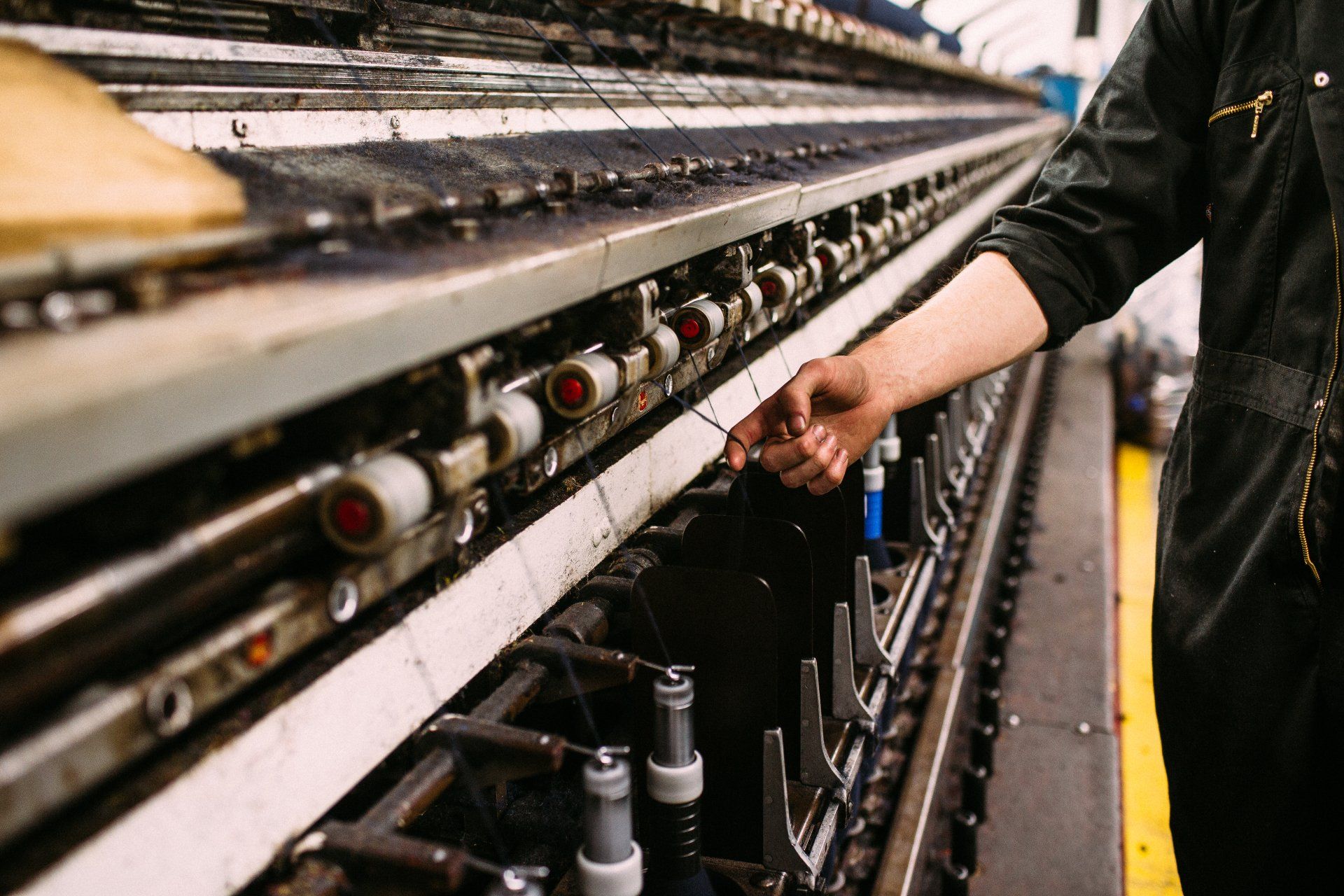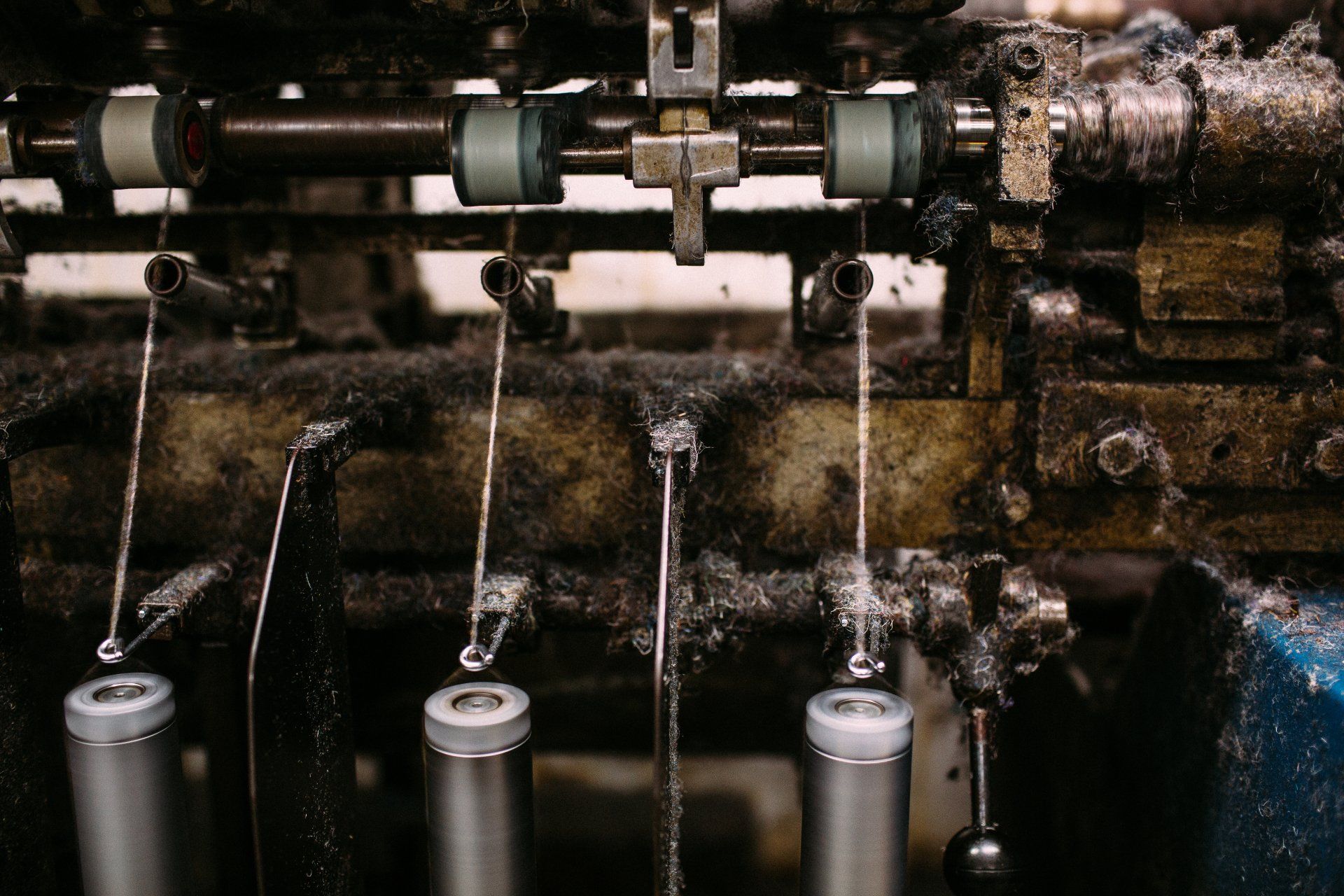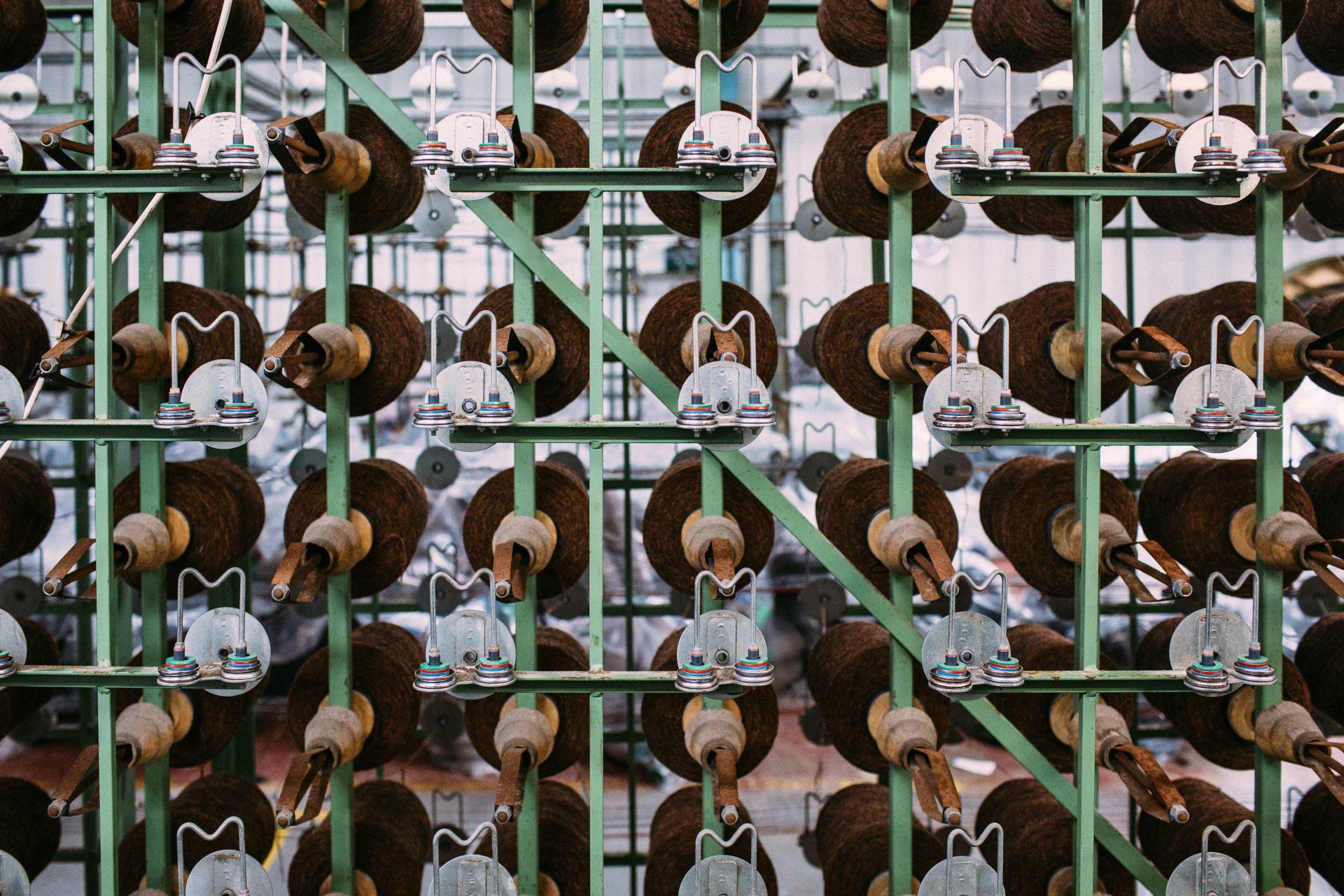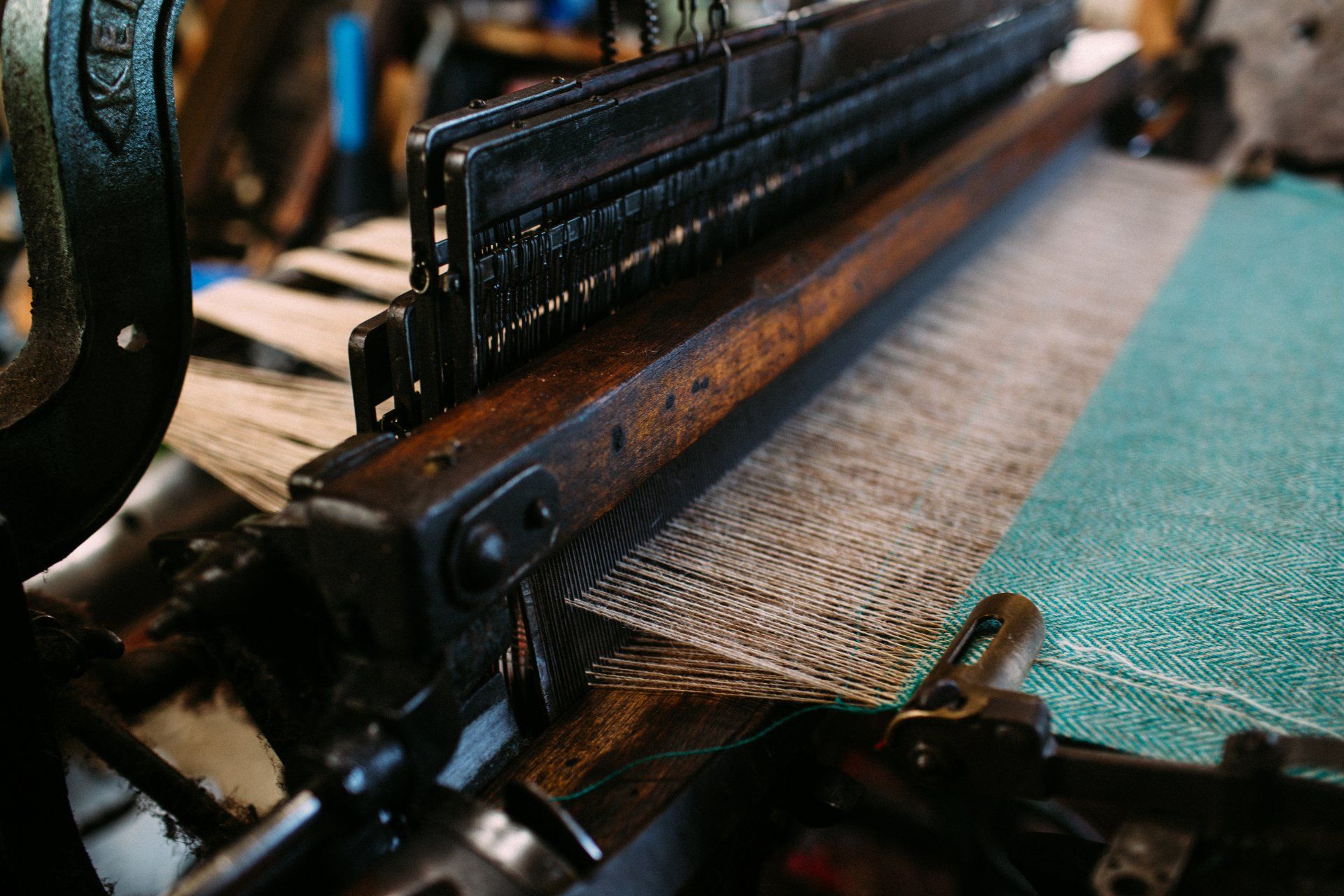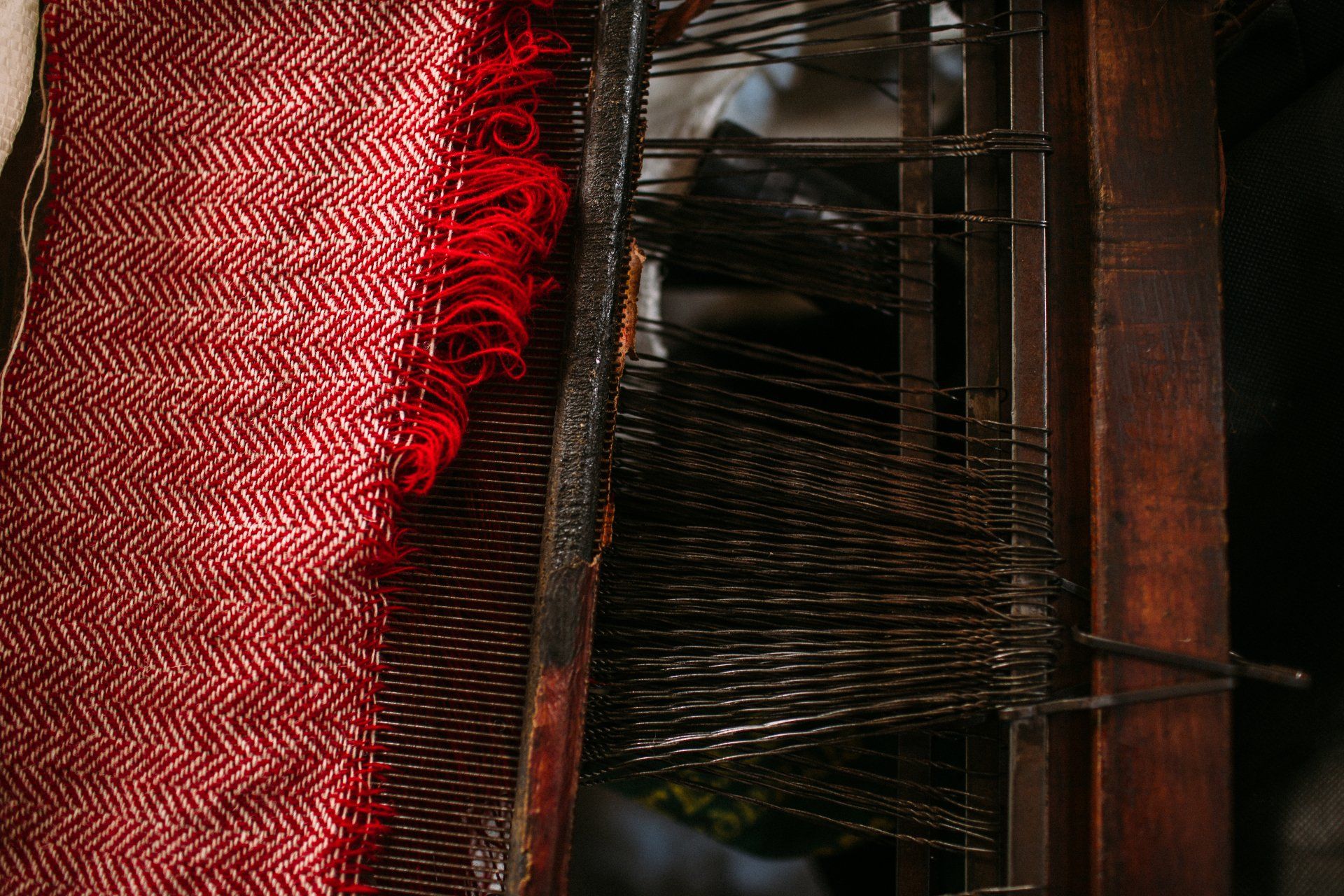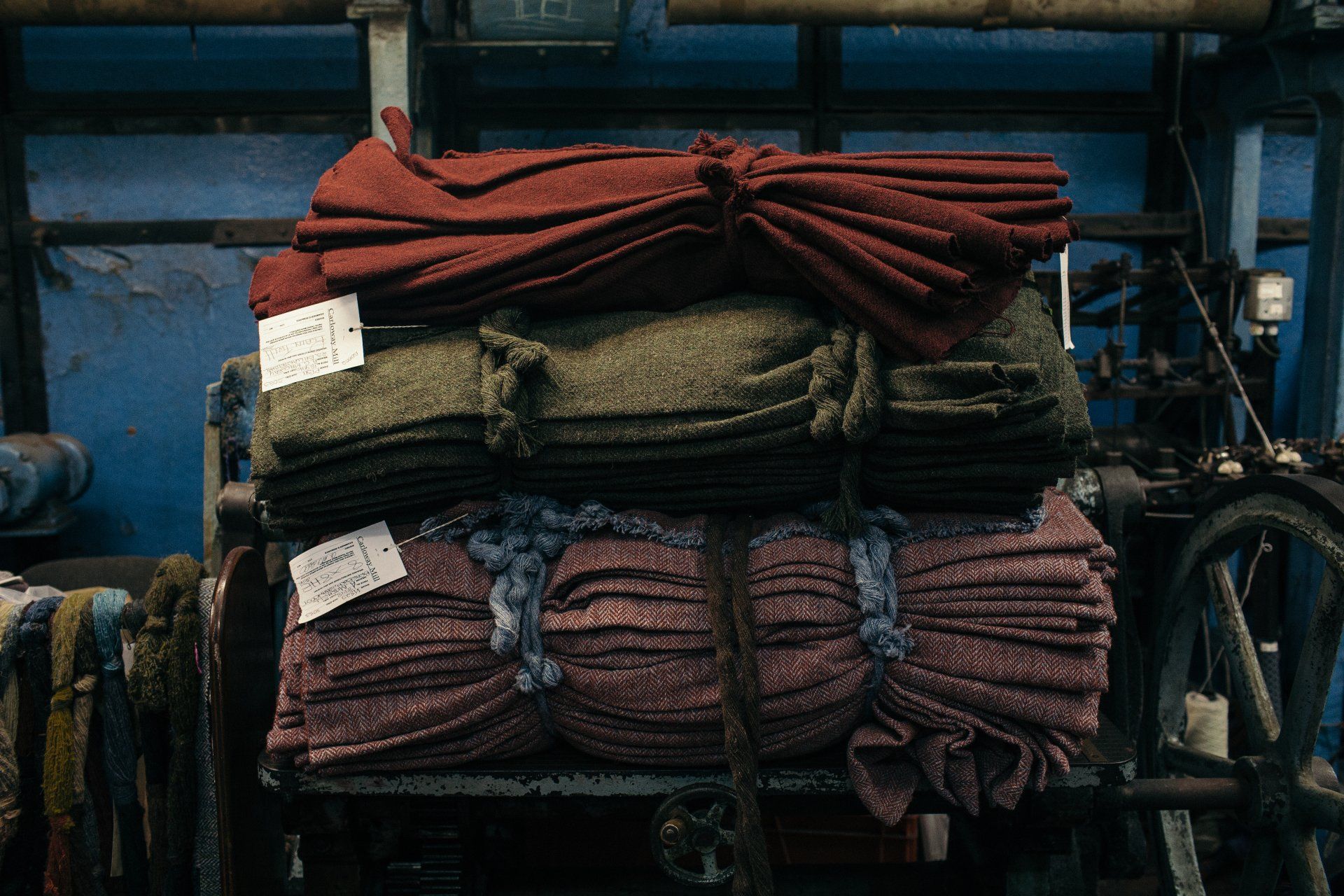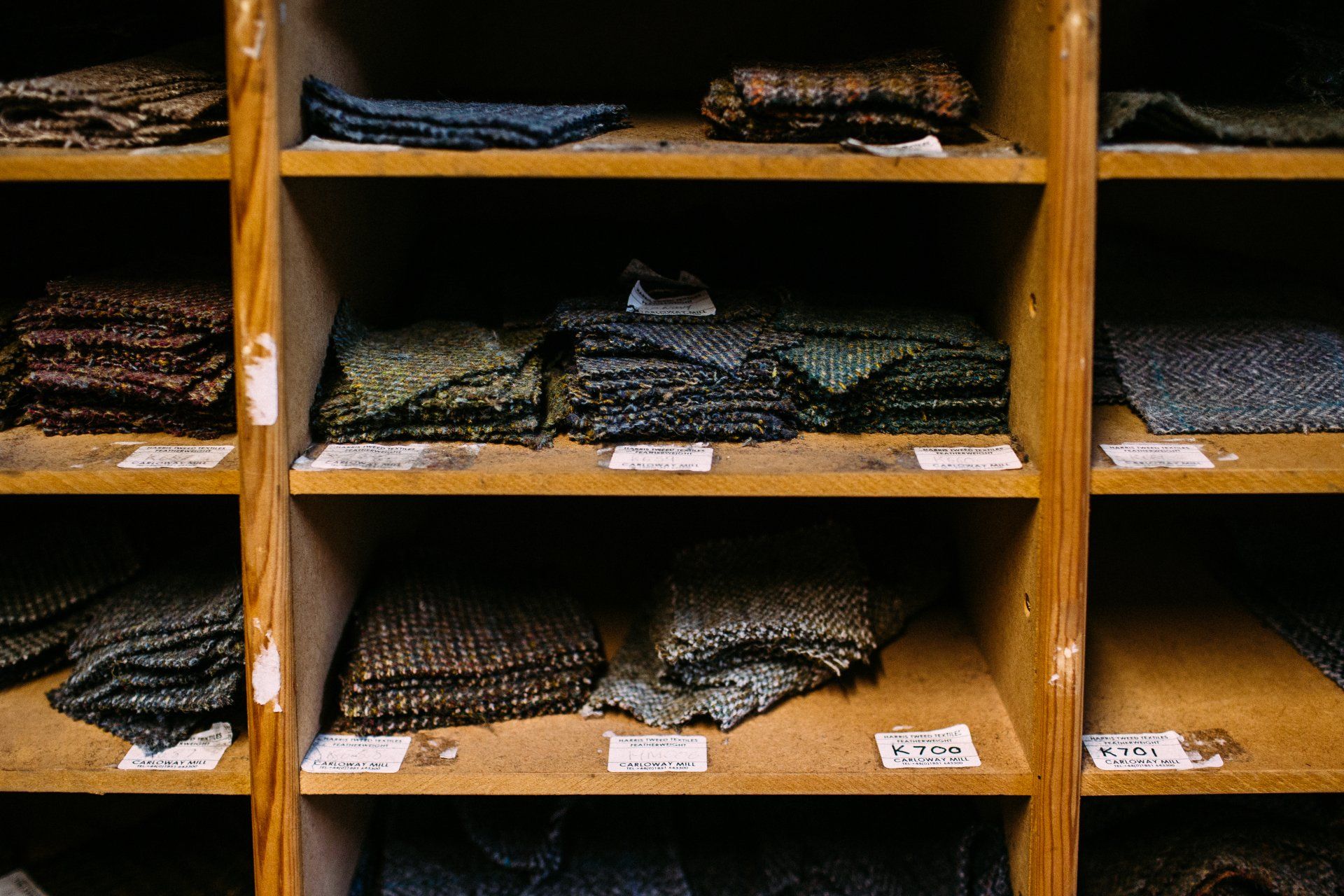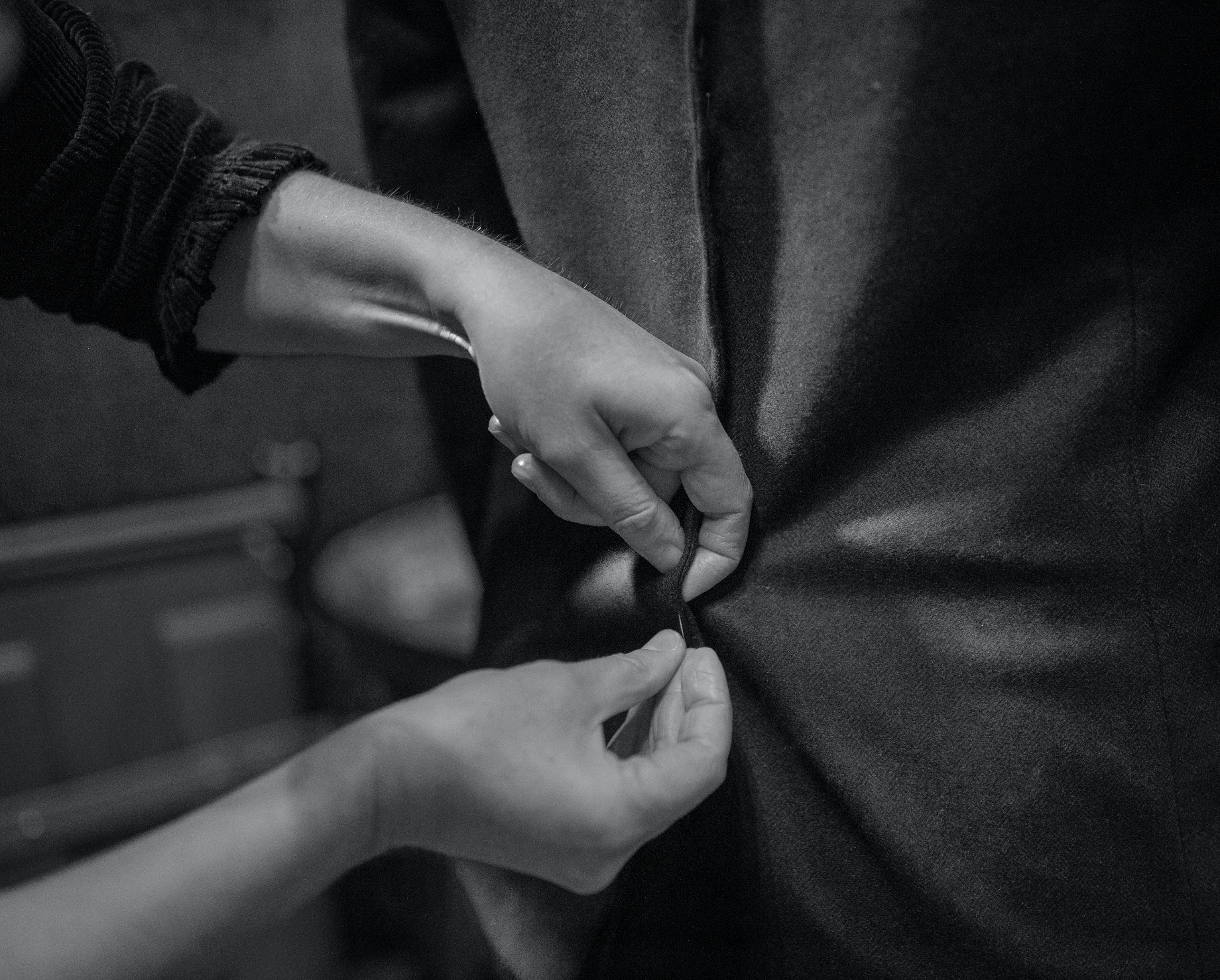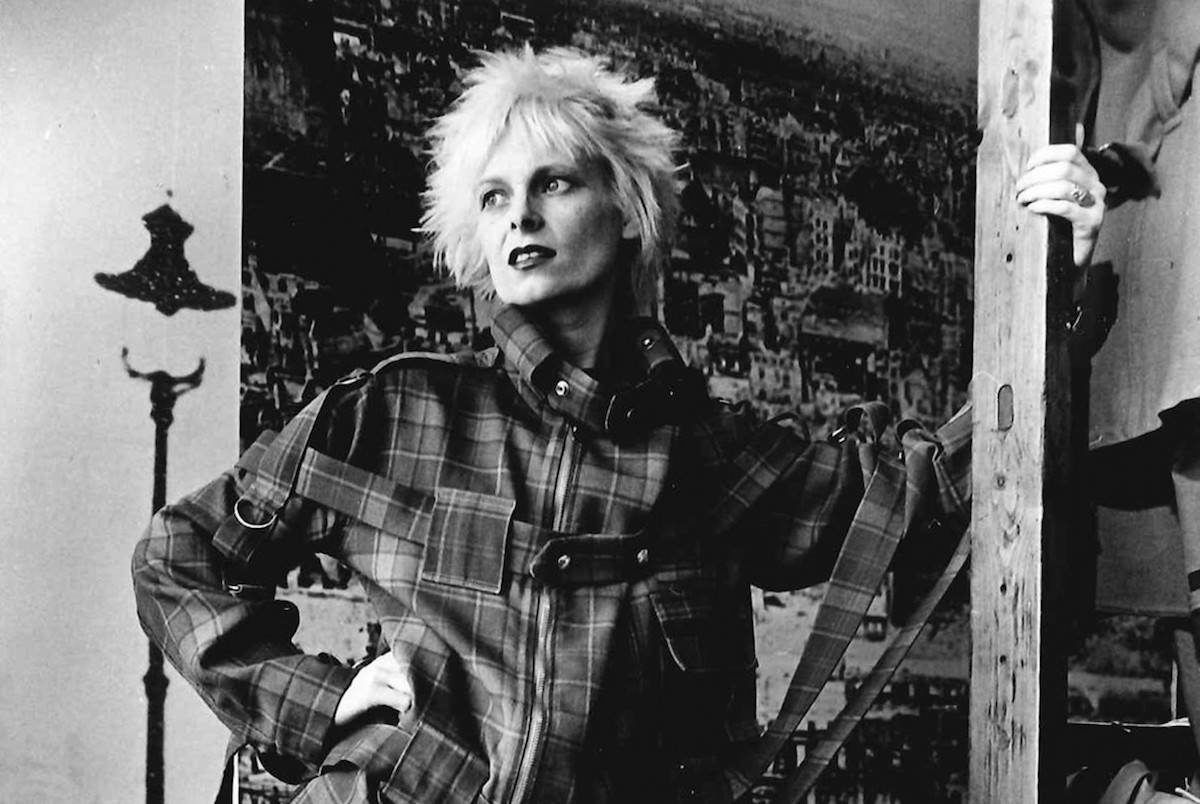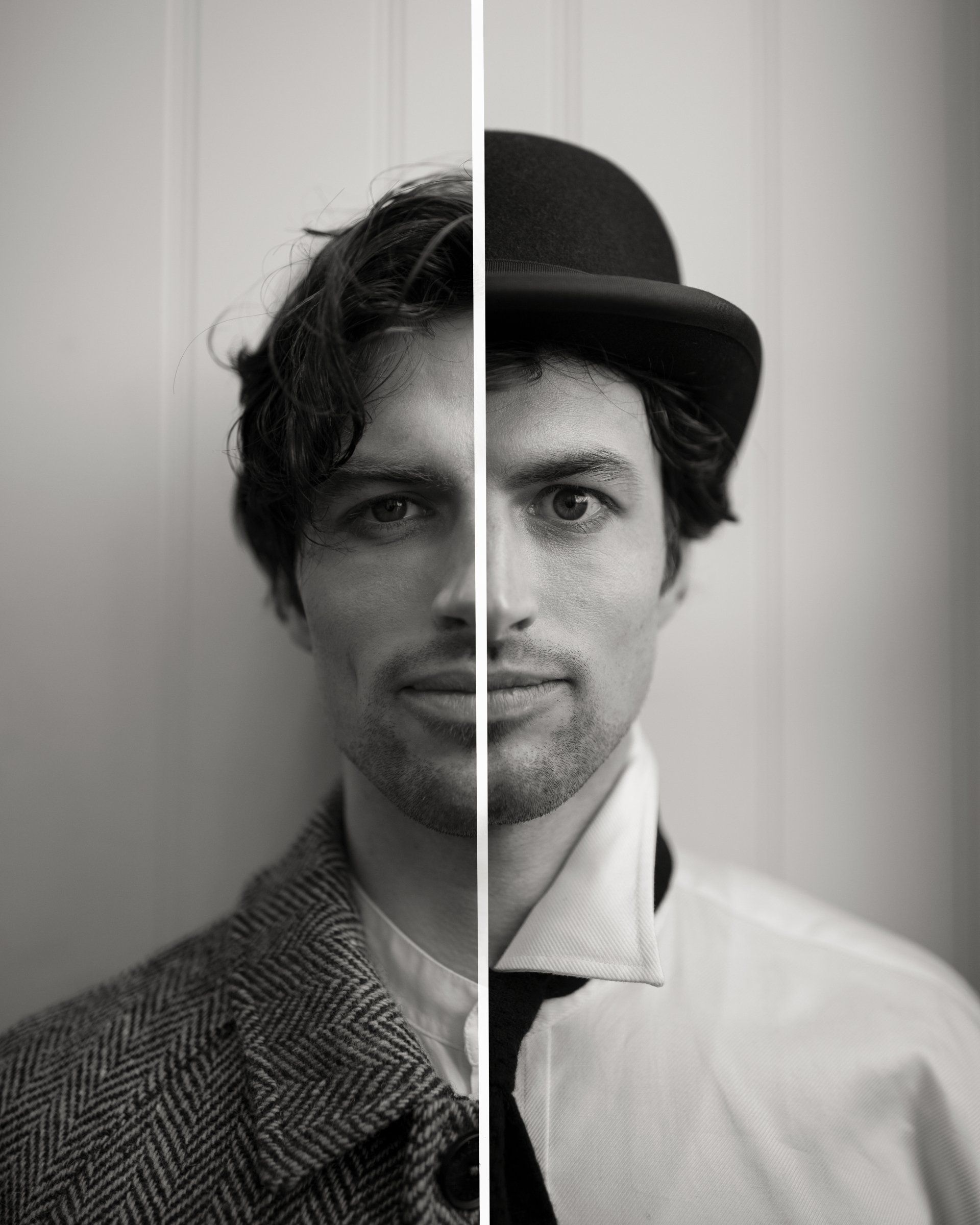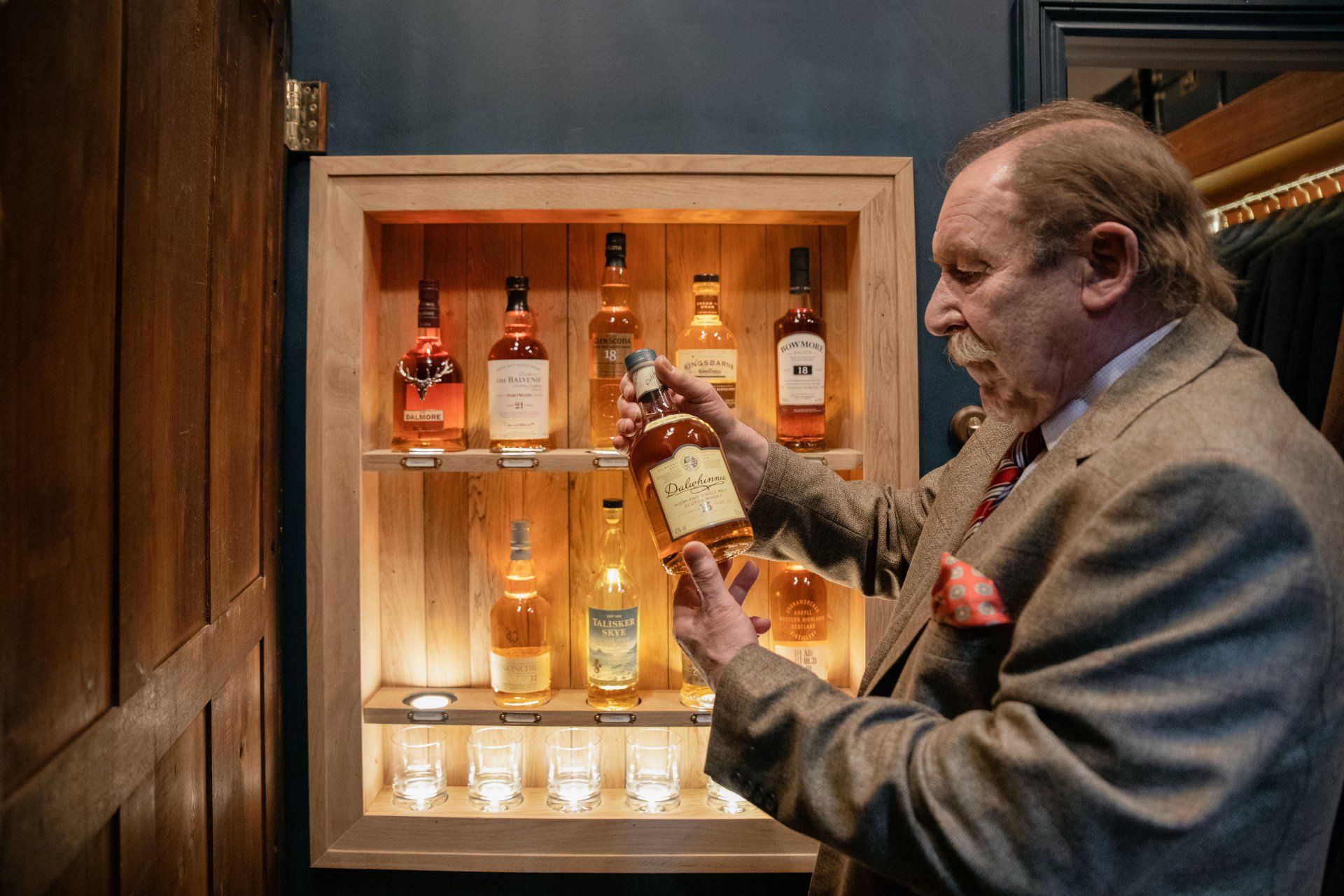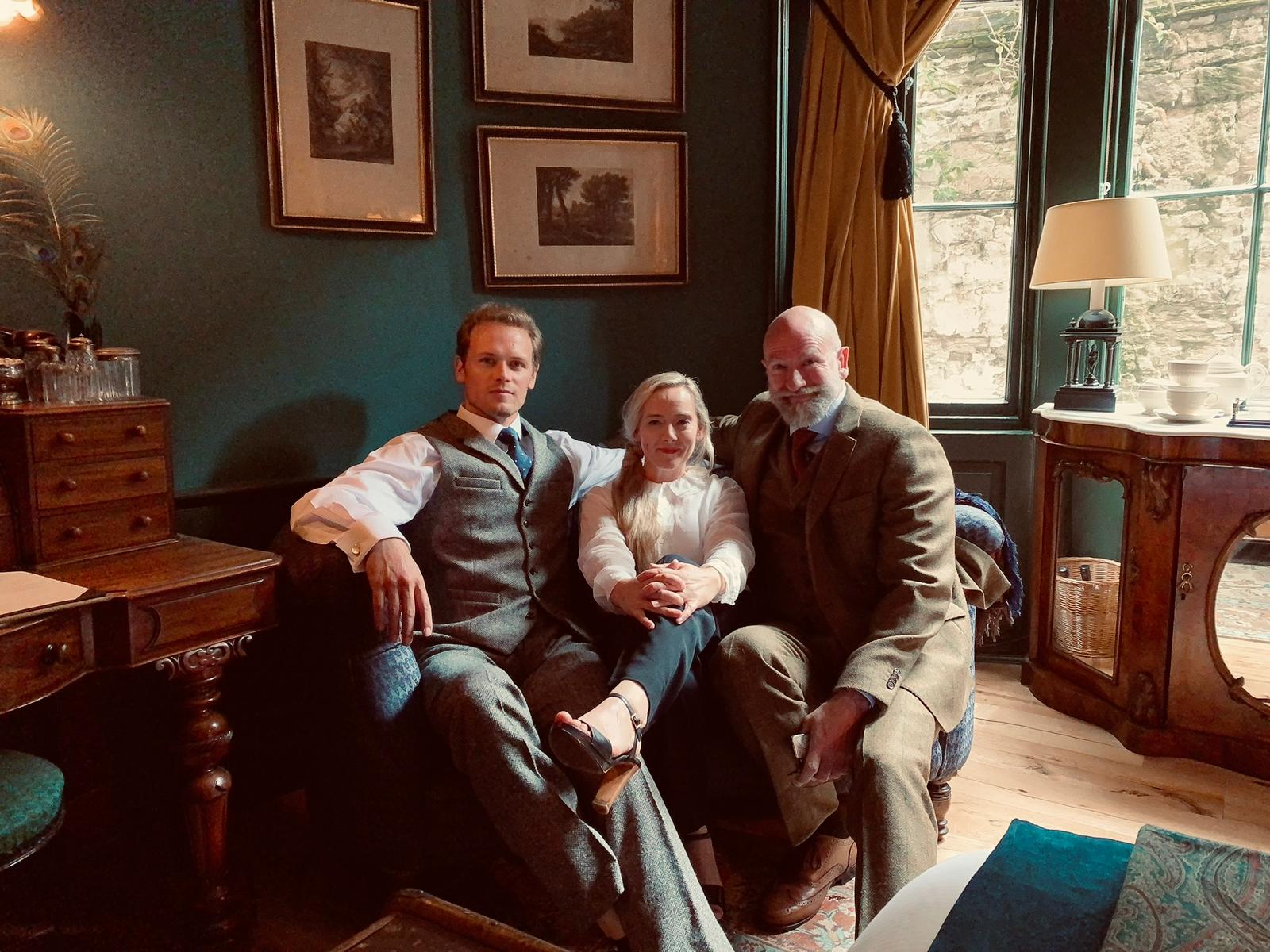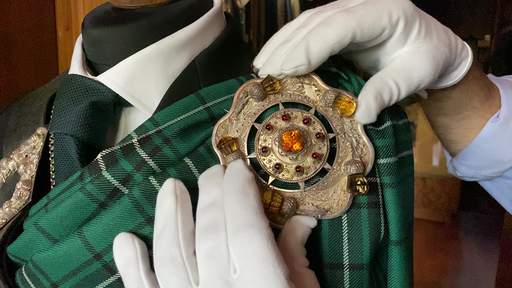The Tweed Process
The raw fleece, mostly from Cheviot British Sheep, is where it all begins.
DYEING
Upon arrival at the mill, it is first transferred to two dye vats which can hold between 125kg and 150kg of raw wool. Dyes and fixing agents are then added to create an array of colours, after which it is rinsed and dried.
BLENDING
Once the newly dyed wool is dry, it is separated so it can be measured into different weights. There is a "recipe" for each colour, with over 50 different colour shades in the fleece, from vibrant yellow through to black. By combining and mixing these colours, depth and tone are created. The mixing is done by pitchfork initially, and then it is transferred into a room where air is used to blow and mix the fleece colours together.
CARDING
The mixed wool is transferred to a holding room near the carding machine. This machine teases and pulls the fleece into half-turned thread. The machine runs the whole length of the mill and had been originally from another mill in Yorkshire. With a series of spiked rollers in action, the transformation is quite incredible to watch. Carding used to be done by hand by ladies of the island - a long and laborious process. Today, due to demand, the process definitely needs to be mechanised.
SPINNING:
The half turned threads are then spun tightly onto bobbins ( or 'cones') to create a colourful yarn. The spinning machine, again, runs the entire length of the mill and is constantly manned to ensure the threads are running evenly and there are no breakages. The bobbins are then either bagged up in lots to be delivered to the weavers to use as the "weft" thread, which runs across the fabric via a shuttle, or are transported across to another building for "warping".
WARPING:
The warp is the longest thread, running the length of the fabric. There are two ways to warp the thread. The first is by a warping machine which winds the yarn from the cones onto a long beam. The beam is used on the double width cloth and can hold unto 200m. The second way is via "handing warping" which is a very graceful and almost theatrical procedure. The yarns are grouped and then warped by hand around a large wooden pegged frame. When complete it is removed and folded into a bale for the weaver to place on their single width loom.
WEAVING:
The yarn is then delivered on cones and beams to the weavers. There are around 120 weavers on Harris and Lewis, but that's another story!
DARNING:
When the cloth is woven it is returned to the mill for "finishing". The darning process requires a lot of skill and patience, akin to that of a painting restorer. The whole length is checked and any snags or breaks are re-woven through by hand.
WASHING and MILLING
The fabric is washed for 30 minutes in hot water then rinsed - this removes a lot of the oils, and the stiffening agent in the yarn. The fabric is then milled, which is a similar process to the washing it, but more extreme. The machine used in this step is over 100 years old! Milling shrinks the cloth to the recommended width and gives it a softer texture. The texture is regulated by hand, and the operator knows by touch when the cloth is ready.
DRYING and BLOWING
The milled cloth is dried and pressed, removing yet more of the roughness and compacting the threads. This is the final part of the process, and the most dramatic, as steam billows out of the machine and floods into ceiling above, giving a wonderful warmth and fragrance to the mill. The finished swathed cloth is then transferred onto rolls, ready for shipping.
The mills are used to create the yarns and finish the cloth. The weaving is still done in the homes or sheds of the crofters on the Isles. This is one of the strict Harris Tweed guidelines which ensures the fabric is authentic. The tour enlightened us as to the complete process and why Harris Tweed is such an important part of the Isles. It is not simply a business, but also part of their proud heritage and culture.
A Huge thank you to Annie MacDonald for allowing us to spend a fun day filming and learning more about the process.
Carloway Mills
Isle of Lewis
Scotland
HS2 9AG
Tel: +44 (0)1851 643 300
Tales of Tailoring




